1 of 22
Download to read offline
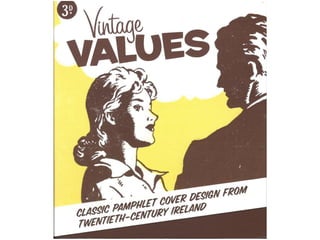
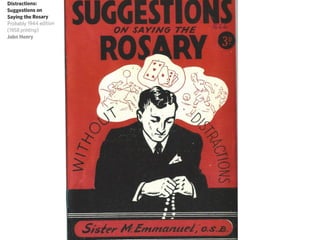





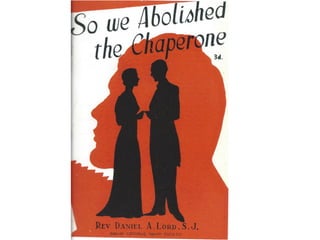


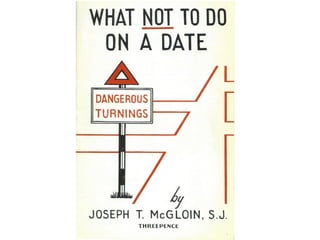





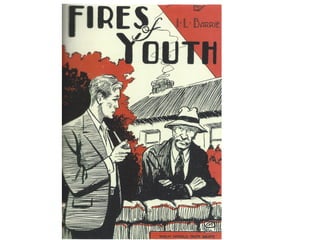





Ad
Recommended
Conference presentation final
Conference presentation finalALYAA AL-BARRAK
Ã˝
Alyaa Al Barrak is a student at the School of Science and Technology under the supervision of Prof. Kamal Bechkoum, Dr. Ali Al Sherbaz, and Dr. Robin Crockett. Their research involves applying network coding techniques to wireless networks, including error detection and correction codes, to increase data transmission efficiency and reliability. Network coding allows nodes in a network to compute and transmit linear combinations of received data packets.–ù–µ—É–ª–æ–≤–∏–º–∞—è —Å–∞–º–æ–æ—Ä–≥–∞–Ω–∏–∑–∞—Ü–∏—è
–ù–µ—É–ª–æ–≤–∏–º–∞—è —Å–∞–º–æ–æ—Ä–≥–∞–Ω–∏–∑–∞—Ü–∏—èUnusual-Concepts
Ã˝
–î–æ–∫—É–º–µ–Ω—Ç –æ–±—Å—É–∂–¥–∞–µ—Ç, –∫–∞–∫ —Ä–∞–∑–±–∏—Ç—å 200 —á–µ–ª–æ–≤–µ–∫ –Ω–∞ —Å–∫—Ä–∞–º –∫–æ–º–∞–Ω–¥—ã, –ø–æ–¥—á–µ—Ä–∫–∏–≤–∞—è –≤–∞–∂–Ω–æ—Å—Ç—å –Ω–∞–∑–Ω–∞—á–µ–Ω–∏—è —Ü–µ–ª–µ–π –∏ –æ–≥—Ä–∞–Ω–∏—á–µ–Ω–∏–π, –∞ —Ç–∞–∫–∂–µ —Å–æ–∑–¥–∞–Ω–∏—è —É—Å–ª–æ–≤–∏–π –¥–ª—è –∫–æ–º–º—É–Ω–∏–∫–∞—Ü–∏–∏. –û–Ω —É–ø–æ–º–∏–Ω–∞–µ—Ç 12 –ø—Ä–∏–Ω—Ü–∏–ø–æ–≤ –∞–¥–∂–∞–π–ª –º–∞–Ω–∏—Ñ–µ—Å—Ç–∞ –∏ —Ç–µ–æ—Ä–∏–∏ –î—ç–≤–∏–¥–∞ –°–Ω–æ—É–¥–µ–Ω–∞ –æ –∑–∞–ø—É—Ç–∞–Ω–Ω–æ—Å—Ç–∏. –¢–∞–∫–∂–µ –¥–æ–∫—É–º–µ–Ω—Ç —É–ø–æ–º–∏–Ω–∞–µ—Ç –ø—Ä–µ–¥—Å—Ç–æ—è—â–∏–µ —Å–æ–±—ã—Ç–∏—è –ø–æ –æ–±—É—á–µ–Ω–∏—é –ø—Ä–æ—Ñ–µ—Å—Å–∏–æ–Ω–∞–ª—å–Ω—ã—Ö —Å–∫—Ä–∞–º-–º–∞—Å—Ç–µ—Ä–æ–≤ –≤ –•–∞—Ä—å–∫–æ–≤–µ –∏ –ö–∏–µ–≤–µ.Agreement Gradients with Cards
Agreement Gradients with CardsUnusual-Concepts
Ã˝
This document discusses different methods for reaching agreement in groups, including consensus-based techniques like compromise, delegation, multivoting, and consensus building. It introduces the concept of "agreement gradients" which uses a card voting system to gauge participants' levels of agreement, then facilitates discussion to help move more participants to a higher agreement level. The document also provides contact information for the author in case the reader wishes to discuss implementation or has additional questions.–ì–∏–±–∫–∏–π —Å–∏—Å—Ç–µ–º–Ω—ã–π –∞–Ω–∞–ª–∏—Ç–∏–∫
–ì–∏–±–∫–∏–π —Å–∏—Å—Ç–µ–º–Ω—ã–π –∞–Ω–∞–ª–∏—Ç–∏–∫Vladimir Kalenov
Ã˝
Туту.ру — самый посещаемый сервис туристических услуг в России с 12 миллионами посетителей в месяц и 600 тысячами в день, основанный в 2003 году. Сервис предлагает авиабилеты, ж/д билеты, туры, гостиницы и электрички. Владимир Калёнов — проворный системный аналитик компании с 230 сотрудниками.Microcredentials acsun colombia 7.xii.21
Microcredentials acsun colombia 7.xii.21Quality and Qualifications Ireland (QQI)
Ã˝
Microcredentials, quality assurance and qualifications in Ireland and EuropeJune 2017 apprenticeship presentation bm final
June 2017 apprenticeship presentation bm finalQuality and Qualifications Ireland (QQI)
Ã˝
Validation is the process by which an awarding body confirms that a learner who completes an education program will acquire the intended knowledge, skills, and competencies. The awarding body reviews the program's design and development to ensure it is coherent, has the necessary capacity and resources, and complies with standards and regulations. The validation process involves comparing a program to occupational profiles developed by industry consortiums, quality assurance guidelines, and ensuring existing QA procedures are followed. The first apprenticeship programs submitted for validation were not ready, and both providers and the awarding body learned more was needed, such as additional guidance and communications, to help apprenticeship programs successfully complete the validation process.The Irish experience of developing and implementing a national qualifications...
The Irish experience of developing and implementing a national qualifications...Quality and Qualifications Ireland (QQI)
Ã˝
Ireland's National Framework of Qualifications (NFQ) was established to assure quality and promote access in education and training, responding to the rapid growth in these fields during the 1990s. Launched in 2003, the NFQ provides a cohesive structure for measuring and comparing all learning achievements across various sectors. The framework is seen as instrumental in fostering a shift towards outcomes-based education and is actively used in quality assurance, curriculum development, and workforce planning.How regional meta-frameworks in Europe - QF-EHEA (Bologna) and EQF for lifelo...
How regional meta-frameworks in Europe - QF-EHEA (Bologna) and EQF for lifelo...Quality and Qualifications Ireland (QQI)
Ã˝
The document discusses regional meta-frameworks in Europe, specifically the European Qualifications Framework (EQF) and the Qualifications Framework for the European Higher Education Area (QF-EHEA), highlighting their roles in complementing national qualifications frameworks. It evaluates the criteria and processes for self-certification of these frameworks, the importance of transparency and validation, and the current stage of EQF implementation, noting the need for further progress. Additionally, it emphasizes the significance of international collaboration and learning among countries to enhance the effectiveness and recognition of qualifications frameworks.Quality assurance and qualifications frameworks as tools to promote mobility ...
Quality assurance and qualifications frameworks as tools to promote mobility ...Quality and Qualifications Ireland (QQI)
Ã˝
This document discusses quality assurance and qualifications frameworks in promoting mobility and recognition across national, bilateral, regional and global levels. It provides examples of quality assurance standards and guidelines in Europe as well as the role of qualifications frameworks. The Irish experience with its integrated agency for quality and qualifications is highlighted, with the agency responsible for the National Framework of Qualifications and quality assurance of higher education institutions and programs, both domestic and transnational. Principles for quality assurance agencies in coordinating cross-border reviews to facilitate mutual understanding and trust while lessening regulatory burdens are outlined.Joint degrees and qualifications frameworks chelyabinsk 16.iii.09
Joint degrees and qualifications frameworks chelyabinsk 16.iii.09Quality and Qualifications Ireland (QQI)
Ã˝
The document discusses the establishment of the European Higher Education Area (EHEA) qualifications framework as part of the Bologna Process to enhance transparency and recognition of qualifications. It outlines the structure of the EHEA framework, including three main cycles of education and descriptors of learning outcomes, as well as the role of national frameworks in aligning with European standards. The importance of international mobility and quality assurance in the recognition of qualifications across Europe is emphasized.Quality assurance and q fs astana (maguire) 9.vi.15
Quality assurance and q fs astana (maguire) 9.vi.15Quality and Qualifications Ireland (QQI)
Ã˝
The document discusses the importance of quality assurance and qualifications frameworks in achieving learning outcomes within educational systems, particularly in relation to the European Higher Education Area. It highlights the role of Quality and Qualifications Ireland (QQI) as an integrated agency for quality assurance and qualifications, outlining policies, guidelines, and the connection between internal and external quality assurance processes. The need for robust programme design and assessment strategies to ensure alignment with national and international standards is emphasized.Permeability within eu he pla keynote (maguire) 20.vi.16, brussels
Permeability within eu he pla keynote (maguire) 20.vi.16, brusselsQuality and Qualifications Ireland (QQI)
Ã˝
The document discusses the implementation and recognition of level 5 qualifications within the European Higher Education Area (EHEA), emphasizing their dual function as a bridge to both professional careers and higher education access. It highlights the variety of institutions that can offer these qualifications and identifies popular fields of study. The document also raises questions about the characteristics and treatment of short cycle programs to enhance their recognition and articulation across different education systems.Recognition and curriculum%2c esu%2c amsterdam (maguire) 11.3.16
Recognition and curriculum%2c esu%2c amsterdam (maguire) 11.3.16Quality and Qualifications Ireland (QQI)
Ã˝
The document provides an overview of the current status and challenges of recognizing qualifications in Europe, particularly in the context of higher education. It emphasizes the need for national legislation to comply with the Lisbon Recognition Convention and encourages higher education institutions to utilize the European Area of Recognition manual for fair recognition practices. Additionally, it outlines ministerial commitments for addressing recognition of prior learning and improving labor market information for graduates.Qualifications frameworks and qualifications standards workshop 2 astana 9.6.15
Qualifications frameworks and qualifications standards workshop 2 astana 9.6.15Quality and Qualifications Ireland (QQI)
Ã˝
This document discusses qualifications frameworks and learning outcomes. It explains that qualifications frameworks organize education around learning outcomes, which are statements about what a learner is expected to know or be able to do after a learning experience. Learning outcomes serve as a shared language between higher education institutions, academics, students, employers, and policymakers. Quality assurance processes link learning outcomes to qualifications by accrediting programs based on how well assessment and instruction align with intended outcomes.Qf ehea self-certification (maguire) seminar astana 9.6.15
Qf ehea self-certification (maguire) seminar astana 9.6.15Quality and Qualifications Ireland (QQI)
Ã˝
This document discusses national qualifications frameworks and their self-certification of compatibility with the European Higher Education Area (EHEA) framework. It provides an overview of qualifications meta-frameworks, the typical stages of national qualifications framework development, and scorecard data on countries' progress. It then examines the criteria and procedures for self-certification, examples of countries that have undertaken joint EQF/QF-EHEA referencing reports, and challenges encountered in self-certification processes. While self-certification methods vary, the process provides incentives for countries to strengthen their national qualifications frameworks and enhance international recognition and reputation.Quality assurance and q fs astana (maguire) 9.vi.15
Quality assurance and q fs astana (maguire) 9.vi.15Quality and Qualifications Ireland (QQI)
Ã˝
This document discusses quality assurance frameworks in Europe and Ireland's experience with quality assurance. It contains the following key points:
1) European standards and guidelines outline three layers of quality assurance - internal quality assurance, external quality assurance, and external quality assurance agencies.
2) Qualifications frameworks in Europe are based on learning outcomes and aim to integrate quality assurance.
3) In Ireland, quality and qualifications responsibilities were consolidated into a single agency called Quality and Qualifications Ireland (QQI).
4) QQI guidelines address important aspects of quality assurance like program design, learning outcomes, assessment strategies, and internal and external quality reviews.Nfq in ireland, europe and the world astana (maguire) 8.6.15
Nfq in ireland, europe and the world astana (maguire) 8.6.15Quality and Qualifications Ireland (QQI)
Ã˝
The document summarizes the origins and development of qualifications frameworks in Ireland and internationally. It discusses how Ireland established a national qualifications framework (NFQ) in 1999 to promote quality, access, and progression across all education and training. The NFQ defines 10 levels of qualifications and relates Irish qualifications to the European Qualifications Framework and Bologna Framework. Implementation of the NFQ across higher education, further education, and vocational education has led to new qualifications, terminology and opportunities for learners. Studies show the NFQ is now well established and integrated into quality assurance, curriculum design, and other areas across Ireland's education and training systems. Globally over 150 countries now have or are developing qualifications frameworks to support recognition of learning and crossIrish nfq hk roundtable 26.xi.14 (maguire)
Irish nfq hk roundtable 26.xi.14 (maguire)Quality and Qualifications Ireland (QQI)
Ã˝
The National Framework of Qualifications in Ireland was launched in 2003 after years of consultation and development, and has since undergone several revisions to align with international frameworks like the European Qualifications Framework. It provides coherence across the Irish education and training system by being used for quality assurance, curriculum design, recognition of prior learning, career guidance, workforce development, international recognition, skills strategies, and more. A review of the framework is scheduled for 2016.Irish nfq morocco 23.x.14
Irish nfq morocco 23.x.14Quality and Qualifications Ireland (QQI)
Ã˝
The National Framework of Qualifications (NFQ) in Ireland was established to create a coherent system for recognizing all learning achievements and facilitating progression in education and training across various sectors. Launched in 2003, the framework promotes quality assurance and lifelong learning while aligning with European standards. Recent developments include a focus on employer engagement and international recognition of qualifications, reflecting an ongoing evolution in response to labor market needs and educational reforms.Eqf conference birmingham 26.ii.14 (maguire)
Eqf conference birmingham 26.ii.14 (maguire)Quality and Qualifications Ireland (QQI)
Ã˝
Bryan Maguire from QQI gave a presentation on the European Qualifications Framework and how it is being implemented. A recent evaluation found little evidence so far of the EQF's impact on national education systems as implementation needs more time. However, early adopting countries like Ireland and the UK see political benefits from sharing experiences with other countries. The EQF also provides structure and support for countries developing new national qualifications frameworks.Teagasc educational forum carlow (maguire qqi) 18.xi.13
Teagasc educational forum carlow (maguire qqi) 18.xi.13Quality and Qualifications Ireland (QQI)
Ã˝
QQI is Ireland's new integrated agency for quality and qualifications that was formed through the merger of several bodies. It oversees further and higher education qualifications frameworks and quality assurance. Teagasc offers agricultural qualifications up to Level 6 that fall under QQI's common awards system. This involves modular components and credit points. QQI is working to streamline processes like validation and quality reviews that Teagasc must go through. Overall, QQI aims to support education providers like Teagasc while taking on more responsibility for qualifications and quality improvement across Ireland's education system.Energy Balances Of Oecd Countries 2011 Iea Statistics 1st Edition Oecd
Energy Balances Of Oecd Countries 2011 Iea Statistics 1st Edition Oecdrazelitouali
Ã˝
Energy Balances Of Oecd Countries 2011 Iea Statistics 1st Edition Oecd
Energy Balances Of Oecd Countries 2011 Iea Statistics 1st Edition Oecd
Energy Balances Of Oecd Countries 2011 Iea Statistics 1st Edition OecdPEST OF WHEAT SORGHUM BAJRA and MINOR MILLETS.pptx
PEST OF WHEAT SORGHUM BAJRA and MINOR MILLETS.pptxArshad Shaikh
Ã˝
Wheat, sorghum, and bajra (pearl millet) are susceptible to various pests that can significantly impact crop yields. Common pests include aphids, stem borers, shoot flies, and armyworms. Aphids feed on plant sap, weakening the plants, while stem borers and shoot flies damage the stems and shoots, leading to dead hearts and reduced growth. Armyworms, on the other hand, are voracious feeders that can cause extensive defoliation and grain damage. Effective management strategies, including resistant varieties, cultural practices, and targeted pesticide applications, are essential to mitigate pest damage and ensure healthy crop production.2025 June Year 9 Presentation: Subject selection.pptx
2025 June Year 9 Presentation: Subject selection.pptxmansk2
Ã˝
2025 June Year 9 Presentation: Subject selectionTHERAPEUTIC COMMUNICATION included definition, characteristics, nurse patient...
THERAPEUTIC COMMUNICATION included definition, characteristics, nurse patient...parmarjuli1412
Ã˝
The document provides an overview of therapeutic communication, emphasizing its importance in nursing to address patient needs and establish effective relationships. THERAPEUTIC COMMUNICATION included some topics like introduction of COMMUNICATION, definition, types, process of communication, definition therapeutic communication, goal, techniques of therapeutic communication, non-therapeutic communication, few ways to improved therapeutic communication, characteristics of therapeutic communication, barrier of THERAPEUTIC RELATIONSHIP, introduction of interpersonal relationship, types of IPR, elements/ dynamics of IPR, introduction of therapeutic nurse patient relationship, definition, purpose, elements/characteristics , and phases of therapeutic communication, definition of Johari window, uses, what actually model represent and its areas, THERAPEUTIC IMPASSES and its management in 5th semester Bsc. nursing and 2nd GNM studentsUnit- 4 Biostatistics & Research Methodology.pdf
Unit- 4 Biostatistics & Research Methodology.pdfKRUTIKA CHANNE
Ã˝
Blocking and confounding (when a third variable, or confounder, influences both the exposure and the outcome) system for Two-level factorials (a type of experimental design where each factor (independent variable) is investigated at only two levels, typically denoted as "high" and "low" or "+1" and "-1")
Regression modeling (statistical model that estimates the relationship between one dependent variable and one or more independent variables using a line): Hypothesis testing in Simple and Multiple regression models
Introduction to Practical components of Industrial and Clinical Trials Problems: Statistical Analysis Using Excel, SPSS, MINITAB¬ÆÔ∏è, DESIGN OF EXPERIMENTS, R - Online Statistical Software to Industrial and Clinical trial approachHow to Create an Event in Odoo 18 - Odoo 18 ∫›∫›fl£s
How to Create an Event in Odoo 18 - Odoo 18 ∫›∫›fl£sCeline George
Ã˝
Creating an event in Odoo 18 is a straightforward process that allows you to manage various aspects of your event efficiently.
Odoo 18 Events Module is a powerful tool for organizing and managing events of all sizes, from conferences and workshops to webinars and meetups. Introduction to Generative AI and Copilot.pdf
Introduction to Generative AI and Copilot.pdfTechSoup
Ã˝
In this engaging and insightful two-part webinar series, where we will dive into the essentials of generative AI, address key AI concerns, and demonstrate how nonprofits can benefit from using Microsoft’s AI assistant, Copilot, to achieve their goals.
This event series to help nonprofits obtain Copilot skills is made possible by generous support from Microsoft.More Related Content
More from Quality and Qualifications Ireland (QQI) (13)
Quality assurance and qualifications frameworks as tools to promote mobility ...
Quality assurance and qualifications frameworks as tools to promote mobility ...Quality and Qualifications Ireland (QQI)
Ã˝
This document discusses quality assurance and qualifications frameworks in promoting mobility and recognition across national, bilateral, regional and global levels. It provides examples of quality assurance standards and guidelines in Europe as well as the role of qualifications frameworks. The Irish experience with its integrated agency for quality and qualifications is highlighted, with the agency responsible for the National Framework of Qualifications and quality assurance of higher education institutions and programs, both domestic and transnational. Principles for quality assurance agencies in coordinating cross-border reviews to facilitate mutual understanding and trust while lessening regulatory burdens are outlined.Joint degrees and qualifications frameworks chelyabinsk 16.iii.09
Joint degrees and qualifications frameworks chelyabinsk 16.iii.09Quality and Qualifications Ireland (QQI)
Ã˝
The document discusses the establishment of the European Higher Education Area (EHEA) qualifications framework as part of the Bologna Process to enhance transparency and recognition of qualifications. It outlines the structure of the EHEA framework, including three main cycles of education and descriptors of learning outcomes, as well as the role of national frameworks in aligning with European standards. The importance of international mobility and quality assurance in the recognition of qualifications across Europe is emphasized.Quality assurance and q fs astana (maguire) 9.vi.15
Quality assurance and q fs astana (maguire) 9.vi.15Quality and Qualifications Ireland (QQI)
Ã˝
The document discusses the importance of quality assurance and qualifications frameworks in achieving learning outcomes within educational systems, particularly in relation to the European Higher Education Area. It highlights the role of Quality and Qualifications Ireland (QQI) as an integrated agency for quality assurance and qualifications, outlining policies, guidelines, and the connection between internal and external quality assurance processes. The need for robust programme design and assessment strategies to ensure alignment with national and international standards is emphasized.Permeability within eu he pla keynote (maguire) 20.vi.16, brussels
Permeability within eu he pla keynote (maguire) 20.vi.16, brusselsQuality and Qualifications Ireland (QQI)
Ã˝
The document discusses the implementation and recognition of level 5 qualifications within the European Higher Education Area (EHEA), emphasizing their dual function as a bridge to both professional careers and higher education access. It highlights the variety of institutions that can offer these qualifications and identifies popular fields of study. The document also raises questions about the characteristics and treatment of short cycle programs to enhance their recognition and articulation across different education systems.Recognition and curriculum%2c esu%2c amsterdam (maguire) 11.3.16
Recognition and curriculum%2c esu%2c amsterdam (maguire) 11.3.16Quality and Qualifications Ireland (QQI)
Ã˝
The document provides an overview of the current status and challenges of recognizing qualifications in Europe, particularly in the context of higher education. It emphasizes the need for national legislation to comply with the Lisbon Recognition Convention and encourages higher education institutions to utilize the European Area of Recognition manual for fair recognition practices. Additionally, it outlines ministerial commitments for addressing recognition of prior learning and improving labor market information for graduates.Qualifications frameworks and qualifications standards workshop 2 astana 9.6.15
Qualifications frameworks and qualifications standards workshop 2 astana 9.6.15Quality and Qualifications Ireland (QQI)
Ã˝
This document discusses qualifications frameworks and learning outcomes. It explains that qualifications frameworks organize education around learning outcomes, which are statements about what a learner is expected to know or be able to do after a learning experience. Learning outcomes serve as a shared language between higher education institutions, academics, students, employers, and policymakers. Quality assurance processes link learning outcomes to qualifications by accrediting programs based on how well assessment and instruction align with intended outcomes.Qf ehea self-certification (maguire) seminar astana 9.6.15
Qf ehea self-certification (maguire) seminar astana 9.6.15Quality and Qualifications Ireland (QQI)
Ã˝
This document discusses national qualifications frameworks and their self-certification of compatibility with the European Higher Education Area (EHEA) framework. It provides an overview of qualifications meta-frameworks, the typical stages of national qualifications framework development, and scorecard data on countries' progress. It then examines the criteria and procedures for self-certification, examples of countries that have undertaken joint EQF/QF-EHEA referencing reports, and challenges encountered in self-certification processes. While self-certification methods vary, the process provides incentives for countries to strengthen their national qualifications frameworks and enhance international recognition and reputation.Quality assurance and q fs astana (maguire) 9.vi.15
Quality assurance and q fs astana (maguire) 9.vi.15Quality and Qualifications Ireland (QQI)
Ã˝
This document discusses quality assurance frameworks in Europe and Ireland's experience with quality assurance. It contains the following key points:
1) European standards and guidelines outline three layers of quality assurance - internal quality assurance, external quality assurance, and external quality assurance agencies.
2) Qualifications frameworks in Europe are based on learning outcomes and aim to integrate quality assurance.
3) In Ireland, quality and qualifications responsibilities were consolidated into a single agency called Quality and Qualifications Ireland (QQI).
4) QQI guidelines address important aspects of quality assurance like program design, learning outcomes, assessment strategies, and internal and external quality reviews.Nfq in ireland, europe and the world astana (maguire) 8.6.15
Nfq in ireland, europe and the world astana (maguire) 8.6.15Quality and Qualifications Ireland (QQI)
Ã˝
The document summarizes the origins and development of qualifications frameworks in Ireland and internationally. It discusses how Ireland established a national qualifications framework (NFQ) in 1999 to promote quality, access, and progression across all education and training. The NFQ defines 10 levels of qualifications and relates Irish qualifications to the European Qualifications Framework and Bologna Framework. Implementation of the NFQ across higher education, further education, and vocational education has led to new qualifications, terminology and opportunities for learners. Studies show the NFQ is now well established and integrated into quality assurance, curriculum design, and other areas across Ireland's education and training systems. Globally over 150 countries now have or are developing qualifications frameworks to support recognition of learning and crossIrish nfq hk roundtable 26.xi.14 (maguire)
Irish nfq hk roundtable 26.xi.14 (maguire)Quality and Qualifications Ireland (QQI)
Ã˝
The National Framework of Qualifications in Ireland was launched in 2003 after years of consultation and development, and has since undergone several revisions to align with international frameworks like the European Qualifications Framework. It provides coherence across the Irish education and training system by being used for quality assurance, curriculum design, recognition of prior learning, career guidance, workforce development, international recognition, skills strategies, and more. A review of the framework is scheduled for 2016.Irish nfq morocco 23.x.14
Irish nfq morocco 23.x.14Quality and Qualifications Ireland (QQI)
Ã˝
The National Framework of Qualifications (NFQ) in Ireland was established to create a coherent system for recognizing all learning achievements and facilitating progression in education and training across various sectors. Launched in 2003, the framework promotes quality assurance and lifelong learning while aligning with European standards. Recent developments include a focus on employer engagement and international recognition of qualifications, reflecting an ongoing evolution in response to labor market needs and educational reforms.Eqf conference birmingham 26.ii.14 (maguire)
Eqf conference birmingham 26.ii.14 (maguire)Quality and Qualifications Ireland (QQI)
Ã˝
Bryan Maguire from QQI gave a presentation on the European Qualifications Framework and how it is being implemented. A recent evaluation found little evidence so far of the EQF's impact on national education systems as implementation needs more time. However, early adopting countries like Ireland and the UK see political benefits from sharing experiences with other countries. The EQF also provides structure and support for countries developing new national qualifications frameworks.Teagasc educational forum carlow (maguire qqi) 18.xi.13
Teagasc educational forum carlow (maguire qqi) 18.xi.13Quality and Qualifications Ireland (QQI)
Ã˝
QQI is Ireland's new integrated agency for quality and qualifications that was formed through the merger of several bodies. It oversees further and higher education qualifications frameworks and quality assurance. Teagasc offers agricultural qualifications up to Level 6 that fall under QQI's common awards system. This involves modular components and credit points. QQI is working to streamline processes like validation and quality reviews that Teagasc must go through. Overall, QQI aims to support education providers like Teagasc while taking on more responsibility for qualifications and quality improvement across Ireland's education system.Quality assurance and qualifications frameworks as tools to promote mobility ...
Quality assurance and qualifications frameworks as tools to promote mobility ...Quality and Qualifications Ireland (QQI)
Ã˝
Joint degrees and qualifications frameworks chelyabinsk 16.iii.09
Joint degrees and qualifications frameworks chelyabinsk 16.iii.09Quality and Qualifications Ireland (QQI)
Ã˝
Permeability within eu he pla keynote (maguire) 20.vi.16, brussels
Permeability within eu he pla keynote (maguire) 20.vi.16, brusselsQuality and Qualifications Ireland (QQI)
Ã˝
Recognition and curriculum%2c esu%2c amsterdam (maguire) 11.3.16
Recognition and curriculum%2c esu%2c amsterdam (maguire) 11.3.16Quality and Qualifications Ireland (QQI)
Ã˝
Qualifications frameworks and qualifications standards workshop 2 astana 9.6.15
Qualifications frameworks and qualifications standards workshop 2 astana 9.6.15Quality and Qualifications Ireland (QQI)
Ã˝
Qf ehea self-certification (maguire) seminar astana 9.6.15
Qf ehea self-certification (maguire) seminar astana 9.6.15Quality and Qualifications Ireland (QQI)
Ã˝
Nfq in ireland, europe and the world astana (maguire) 8.6.15
Nfq in ireland, europe and the world astana (maguire) 8.6.15Quality and Qualifications Ireland (QQI)
Ã˝
Recently uploaded (20)
Energy Balances Of Oecd Countries 2011 Iea Statistics 1st Edition Oecd
Energy Balances Of Oecd Countries 2011 Iea Statistics 1st Edition Oecdrazelitouali
Ã˝
Energy Balances Of Oecd Countries 2011 Iea Statistics 1st Edition Oecd
Energy Balances Of Oecd Countries 2011 Iea Statistics 1st Edition Oecd
Energy Balances Of Oecd Countries 2011 Iea Statistics 1st Edition OecdPEST OF WHEAT SORGHUM BAJRA and MINOR MILLETS.pptx
PEST OF WHEAT SORGHUM BAJRA and MINOR MILLETS.pptxArshad Shaikh
Ã˝
Wheat, sorghum, and bajra (pearl millet) are susceptible to various pests that can significantly impact crop yields. Common pests include aphids, stem borers, shoot flies, and armyworms. Aphids feed on plant sap, weakening the plants, while stem borers and shoot flies damage the stems and shoots, leading to dead hearts and reduced growth. Armyworms, on the other hand, are voracious feeders that can cause extensive defoliation and grain damage. Effective management strategies, including resistant varieties, cultural practices, and targeted pesticide applications, are essential to mitigate pest damage and ensure healthy crop production.2025 June Year 9 Presentation: Subject selection.pptx
2025 June Year 9 Presentation: Subject selection.pptxmansk2
Ã˝
2025 June Year 9 Presentation: Subject selectionTHERAPEUTIC COMMUNICATION included definition, characteristics, nurse patient...
THERAPEUTIC COMMUNICATION included definition, characteristics, nurse patient...parmarjuli1412
Ã˝
The document provides an overview of therapeutic communication, emphasizing its importance in nursing to address patient needs and establish effective relationships. THERAPEUTIC COMMUNICATION included some topics like introduction of COMMUNICATION, definition, types, process of communication, definition therapeutic communication, goal, techniques of therapeutic communication, non-therapeutic communication, few ways to improved therapeutic communication, characteristics of therapeutic communication, barrier of THERAPEUTIC RELATIONSHIP, introduction of interpersonal relationship, types of IPR, elements/ dynamics of IPR, introduction of therapeutic nurse patient relationship, definition, purpose, elements/characteristics , and phases of therapeutic communication, definition of Johari window, uses, what actually model represent and its areas, THERAPEUTIC IMPASSES and its management in 5th semester Bsc. nursing and 2nd GNM studentsUnit- 4 Biostatistics & Research Methodology.pdf
Unit- 4 Biostatistics & Research Methodology.pdfKRUTIKA CHANNE
Ã˝
Blocking and confounding (when a third variable, or confounder, influences both the exposure and the outcome) system for Two-level factorials (a type of experimental design where each factor (independent variable) is investigated at only two levels, typically denoted as "high" and "low" or "+1" and "-1")
Regression modeling (statistical model that estimates the relationship between one dependent variable and one or more independent variables using a line): Hypothesis testing in Simple and Multiple regression models
Introduction to Practical components of Industrial and Clinical Trials Problems: Statistical Analysis Using Excel, SPSS, MINITAB¬ÆÔ∏è, DESIGN OF EXPERIMENTS, R - Online Statistical Software to Industrial and Clinical trial approachHow to Create an Event in Odoo 18 - Odoo 18 ∫›∫›fl£s
How to Create an Event in Odoo 18 - Odoo 18 ∫›∫›fl£sCeline George
Ã˝
Creating an event in Odoo 18 is a straightforward process that allows you to manage various aspects of your event efficiently.
Odoo 18 Events Module is a powerful tool for organizing and managing events of all sizes, from conferences and workshops to webinars and meetups. Introduction to Generative AI and Copilot.pdf
Introduction to Generative AI and Copilot.pdfTechSoup
Ã˝
In this engaging and insightful two-part webinar series, where we will dive into the essentials of generative AI, address key AI concerns, and demonstrate how nonprofits can benefit from using Microsoft’s AI assistant, Copilot, to achieve their goals.
This event series to help nonprofits obtain Copilot skills is made possible by generous support from Microsoft.Exploring Ocean Floor Features for Middle School
Exploring Ocean Floor Features for Middle SchoolMarie
Ã˝
This 16 slide science reader is all about ocean floor features. It was made to use with middle school students.
You can download the PDF at thehomeschooldaily.com
Thanks! Marie GEOGRAPHY-Study Material [ Class 10th] .pdf
GEOGRAPHY-Study Material [ Class 10th] .pdfSHERAZ AHMAD LONE
Ã˝
"Geography Study Material for Class 10th" provides a comprehensive and easy-to-understand resource for key topics like Resources & Development, Water Resources, Agriculture, Minerals & Energy, Manufacturing Industries, and Lifelines of the National Economy. Designed as per the latest NCERT/JKBOSE syllabus, it includes notes, maps, diagrams, and MODEL question Paper to help students excel in exams. Whether revising for exams or strengthening conceptual clarity, this material ensures effective learning and high scores. Perfect for last-minute revisions and structured study sessions.Publishing Your Memoir with Brooke Warner
Publishing Your Memoir with Brooke WarnerBrooke Warner
Ã˝
Brooke Warner presents on getting published - traditional, hybrid, and self-publishing.
www.memoirnation.comSustainable Innovation with Immersive Learning
Sustainable Innovation with Immersive LearningLeonel Morgado
Ã˝
Prof. Leonel and Prof. Dennis approached educational uses, practices, and strategies of using immersion as a lens to interpret, design, and planning educational activities in a sustainable way. Rather than one-off gimmicks, the intent is to enable instructors (and institutions) to be able to include them in their regular activities, including the ability to evaluate and redesign them.
Immersion as a phenomenon enables interpreting pedagogical activities in a learning-agnostic way: you take a stance on the learning theory to follow, and leverage immersion to envision and guide your practice.BUSINESS QUIZ PRELIMS | QUIZ CLUB OF PSGCAS | 9 SEPTEMBER 2024
BUSINESS QUIZ PRELIMS | QUIZ CLUB OF PSGCAS | 9 SEPTEMBER 2024Quiz Club of PSG College of Arts & Science
Ã˝
THE QUIZ CLUB OF PSGCAS BRINGS T0 YOU A FUN-FILLED, SEAT EDGE BUSINESS QUIZ
DIVE INTO THE PRELIMS OF BIZCOM 2024
QM: GOWTHAM S
BCom (2022-25)
THE QUIZ CLUB OF PSGCAS
How to Manage Multi Language for Invoice in Odoo 18
How to Manage Multi Language for Invoice in Odoo 18Celine George
Ã˝
Odoo supports multi-language functionality for invoices, allowing you to generate invoices in your customers’ preferred languages. Multi-language support for invoices is crucial for businesses operating in global markets or dealing with customers from different linguistic backgrounds. Paper 108 | Thoreau’s Influence on Gandhi: The Evolution of Civil Disobedience
Paper 108 | Thoreau’s Influence on Gandhi: The Evolution of Civil DisobedienceRajdeep Bavaliya
Ã˝
Dive into the powerful journey from Thoreau’s 19th‑century essay to Gandhi’s mass movement, and discover how one man’s moral stand became the backbone of nonviolent resistance worldwide. Learn how conscience met strategy to spark revolutions, and why their legacy still inspires today’s social justice warriors. Uncover the evolution of civil disobedience. Don’t forget to like, share, and follow for more deep dives into the ideas that changed the world.
M.A. Sem - 2 | Presentation
Presentation Season - 2
Paper - 108: The American Literature
Submitted Date: April 2, 2025
Paper Name: The American Literature
Topic: Thoreau’s Influence on Gandhi: The Evolution of Civil Disobedience
[Please copy the link and paste it into any web browser to access the content.]
Video Link: https://youtu.be/HXeq6utg7iQ
For a more in-depth discussion of this presentation, please visit the full blog post at the following link: https://rajdeepbavaliya2.blogspot.com/2025/04/thoreau-s-influence-on-gandhi-the-evolution-of-civil-disobedience.html
Please visit this blog to explore additional presentations from this season:
Hashtags:
#CivilDisobedience #ThoreauToGandhi #NonviolentResistance #Satyagraha #Transcendentalism #SocialJustice #HistoryUncovered #GandhiLegacy #ThoreauInfluence #PeacefulProtest
Keyword Tags:
civil disobedience, Thoreau, Gandhi, Satyagraha, nonviolent protest, transcendentalism, moral resistance, Gandhi Thoreau connection, social change, political philosophyICT-8-Module-REVISED-K-10-CURRICULUM.pdf
ICT-8-Module-REVISED-K-10-CURRICULUM.pdfpenafloridaarlyn
Ã˝
In this module, you will discover how digital tools, systems, and platforms empower people, businesses, and communities in the modern world. As 21st-century learners, you are part of a generation that lives and learns in a digital environment. This module is designed to guide you in exploring how ICT serves as a powerful tool—not only for communication but also for innovation, entrepreneurship, and responsible citizenship. Throughout this learning material, you will examine how ICT is used in real-world scenarios such as online marketing, digital citizenship, and legal and ethical issues in technology use. You’ll gain practical knowledge and skills, from creating websites and managing e-commerce platforms, to analyzing data and practicing safe and responsible behavior online.
By engaging with the lessons, activities, and performance tasks in this module, you will become more than just a technology user—you will be a responsible, informed, and empowered digital citizen ready to thrive in today’s interconnected world.
Let’s begin this journey and unlock the full potential of ICT in your everyday life!
ROLE PLAY: FIRST AID -CPR & RECOVERY POSITION.pptx
ROLE PLAY: FIRST AID -CPR & RECOVERY POSITION.pptxBelicia R.S
Ã˝
Role play : First Aid- CPR, Recovery position and Hand hygiene.
Scene 1: Three friends are shopping in a mall
Scene 2: One of the friend becomes victim to electric shock.
Scene 3: Arrival of a first aider
Steps:
Safety First
Evaluate the victim‘s condition
Call for help
Perform CPR- Secure an open airway, Chest compression, Recuse breaths.
Put the victim in Recovery position if unconscious and breathing normally.
BUSINESS QUIZ PRELIMS | QUIZ CLUB OF PSGCAS | 9 SEPTEMBER 2024
BUSINESS QUIZ PRELIMS | QUIZ CLUB OF PSGCAS | 9 SEPTEMBER 2024Quiz Club of PSG College of Arts & Science
Ã˝
Ad
